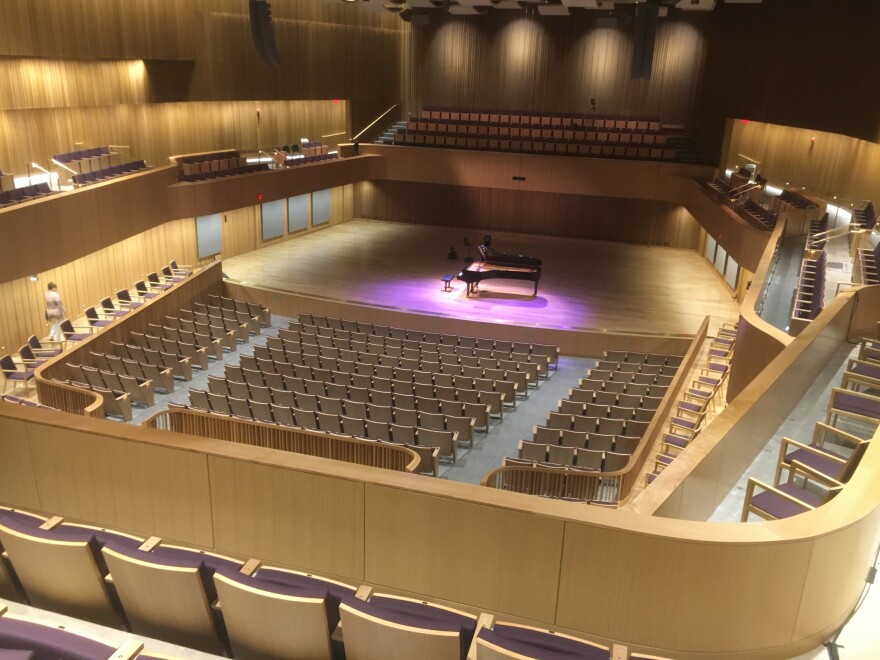From KERA News:
The 16th Van Cliburn International Piano Competition continues in Fort Worth. The original 30 musicians are now down to 12 semi-finalists.
From the start, both audiences and jury members have been judging the musicians – that’s part of any competition. But there was another player on trial – the new hall at Texas Christian University.
Designed to hold a little more than 700 people, TCU’s new Van Cliburn Concert Hall is smaller than the 1200-seat Ed Landreth Auditorium and larger than the Pepsico Recital Hall, designed for 325 people.
In the works for six years, the new $53 million hall opened this year at TCU’s Music Center. It brought the Cliburn competition – which departed TCU after 1997 – back to the school. The first two recital rounds were all performed there.
While the competition’s concerto rounds will return Bass Hall, a question hung in the air like a long-held note – how did the new sound?
Wayne Lee Gay is a Fort Worth classical music critic covering the competition.
“It’s a great room for piano music,” said Gay. “I think the size of the stage, the way the stage is set up in relation to the audience, the handling of the surfaces throughout the room. it’s just – it’s an ideal room for piano music.”
Gay is reviewing every performance in the competition. He says the hall works for several reasons.
“No absolute flat surfaces, no absolute right angles, which is what makes for good acoustics, basically,” said Gay. “And a nice moderately high ceiling. You want a certain amount of resonance but not too much. That interferes with clarity.”
Sean Atkinson, director of TCU’s music school, said the hall was designed for resonance and clarity.
It was built to serve many groups, from large vocal and orchestral ensembles to solo piano.
TCU hired New York’s Acoustical Distinctions to design the hall, and Atkinson says it delivered. For example, acoustics can be adjusted, by raising or lowering sound dampening curtains.
“The majority of the curtains are actually behind the walls,” Atkinson said, “but yet can affect the acoustics of the space. So if you’re sitting in the audience, you’ll never know that the hall’s acoustics have been adjusted until you hear something being played. We also have a series of panels above the stage that can be deployed or retracted that affect the volume of sound.”
The sound works, says Francesco Granata, a 23-year-old competitor from Italy. He called the hall generous. That’s because what he played rang out – the sound did not immediately die.
“It is not dry. And usually, you know, that is the nightmare of every musician,” Granata said.
Wanting to avoid that nightmare, 22 year-old Chinese competitor Xiaolo Zang listened to other competitors in the hall before he competed. He wanted to gauge the hall’s acoustics.
“I played yesterday and I felt it’s one of the finest places I’ve played,” said Zang. “In the audience, I felt this acoustic quite warm and I felt like I’m surrounded by the warm sound and music itself.”
Jury member and concert pianist Anne-Marie McDermott likes the acoustics.
“It’s a very vibrant hall,” McDermott said. “It has a tremendous range of color. So even the softest things that they play just kind of waft out. But the hall can also handle very big playing, which we’re hearing a lot of as well. So I think it’s a revealing hall because you hear everything.”
And that’s to be expected. After all, the hall has to live up to its namesake: Van Cliburn.













